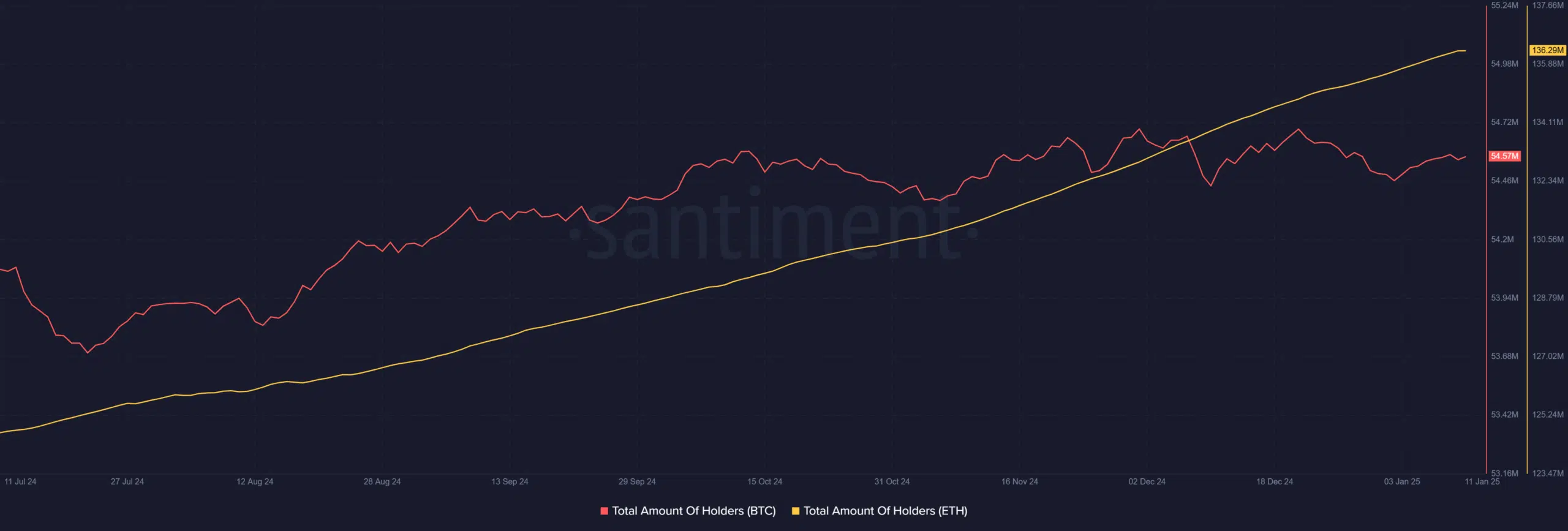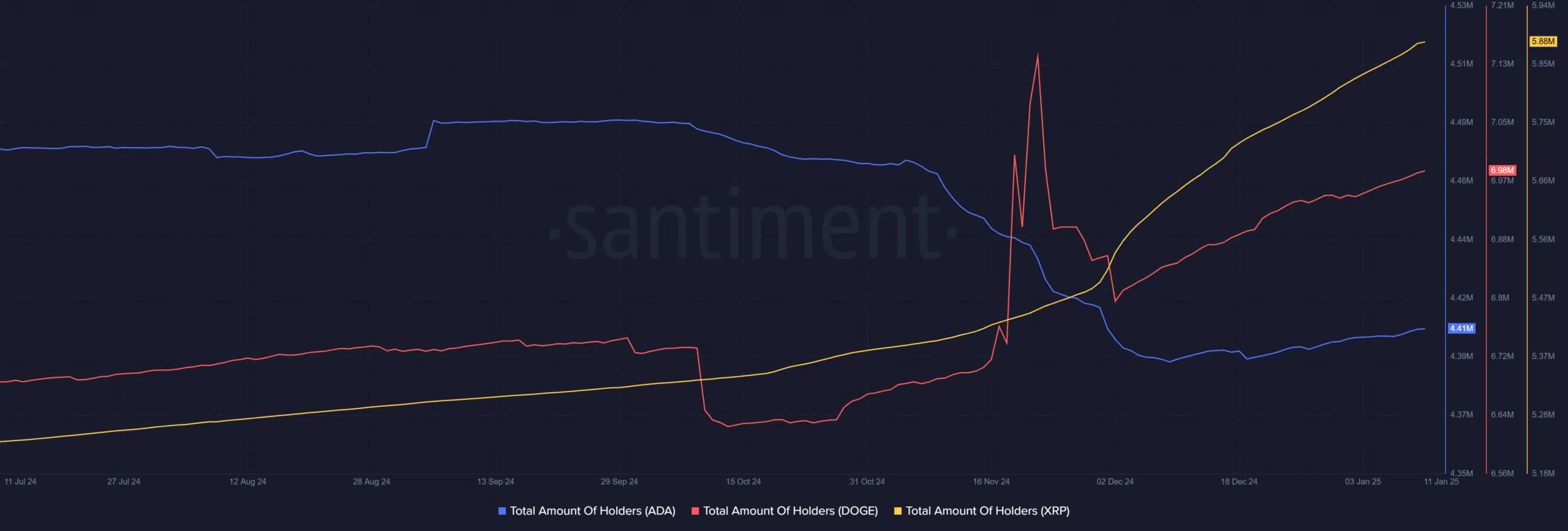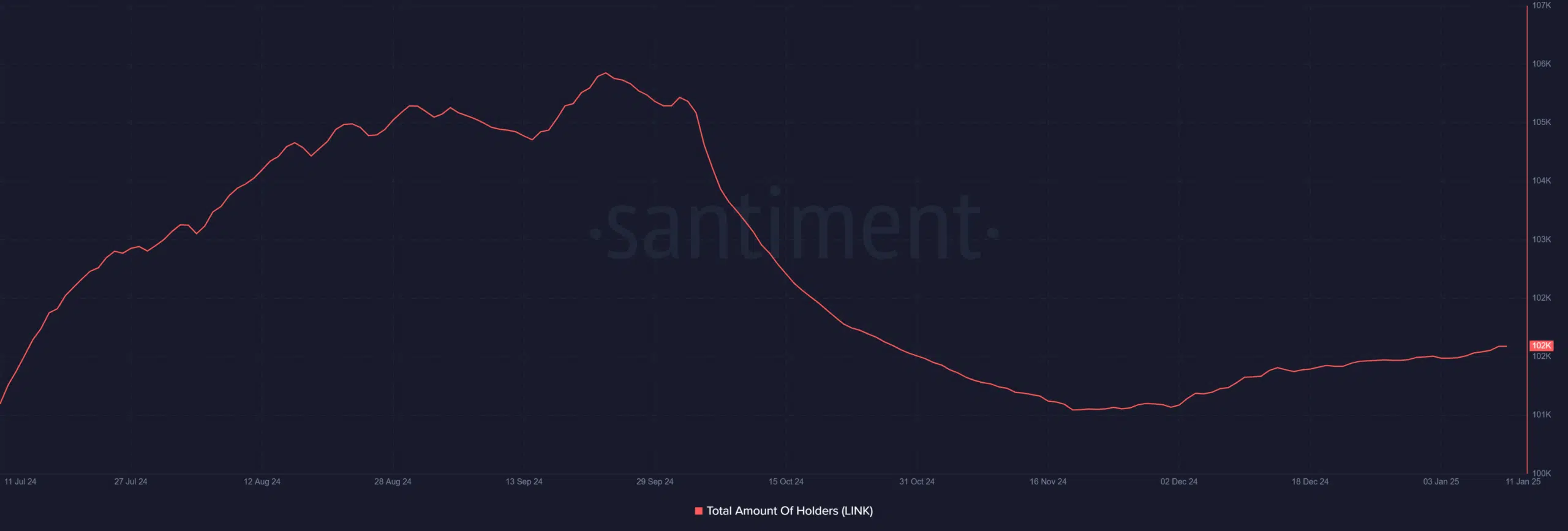Bitcoin and Ethereum – Market leaders
Bitcoin added over 102,000 new wallets in 2025, reaffirming its position as the market’s unshakable anchor. The appeal lies in its simplicity and strong narrative of being a hedge against macroeconomic uncertainty. Even during turbulent times, BTC’s ability to attract new holders showcases its unmatched trustworthiness among investors.
Meanwhile, Ethereum’s explosive growth – with 645,000 new wallets – underscores its dominance as a multi-faceted blockchain. This hike highlights market confidence in Ethereum’s expanding ecosystem, particularly its scaling solutions like Layer 2 networks.
These innovations are making Ethereum more accessible and cost-efficient, driving adoption. Together, Bitcoin and Ethereum highlighted that the market’s faith in established giants remains unyielding, despite challenges.
Other assets with positive growth
Since the beginning of 2025, XRP has seen the creation of 58,000 new wallets. This uptick has been bolstered by Ripple’s recent regulatory achievements, such as the NYDFS’s approval of its stablecoin, RLUSD, in December. This approval enhanced Ripple’s digital payment platform, attracting more users and increasing XRP’s value.
Dogecoin [DOGE], despite its inherent volatility, has added 29,000 new wallets over the same period. Its enduring appeal stems from its meme origins and a vibrant community that actively engages in fundraising and promotional activities. This grassroots support continues to drive adoption, even in a fluctuating market.
On the contrary, Cardano [ADA] only saw a modest hike of 2,800 new wallets, indicating a slower adoption rate. This may be attributed to the platform’s deliberate development approach and the competitive landscape of smart contract platforms, which could be influencing investor interest.
Chainlink’s contrarian trend
Chainlink [LINK] saw a fall of 3.3K wallets – This decline reflected a shift in market sentiment, potentially driven by several factors. This list included – Greater competition from emerging decentralized oracle networks, market-wide bearish trends, or doubts regarding scalability.
Interestingly, such a drop in wallet holders might be seen as a contrarian indicator. Historically, significant sell-offs and wallet declines have often preceded recovery phases. For astute investors, this scenario may present an opportunity to accumulate LINK while others remain cautious.
Read Bitcoin’s [BTC] Price Prediction 2025-26
Why wallet growth is a better indicator than price fluctuations
Price volatility often commands attention, but it can obscure the underlying investor sentiment. Wallet growth, in contrast, serves as a more reliable metric for gauging long-term confidence in a project.
For example, short-term price fluctuations are part of natural market cycles, driven by trading psychology, macroeconomic events, and external speculation. Wallet growth, however, indicates an increasing number of holders who believe in the asset’s future. This steady accumulation reflects genuine adoption and commitment to the network, signaling a more optimistic outlook.
By focusing on wallet growth, investors can gain a clearer picture of an asset’s potential, even during price corrections. In this context, Bitcoin’s steady wallet additions of over 102,000 and Ethereum’s 645,000 exemplify how strong fundamentals continue to attract new participants to established networks.



